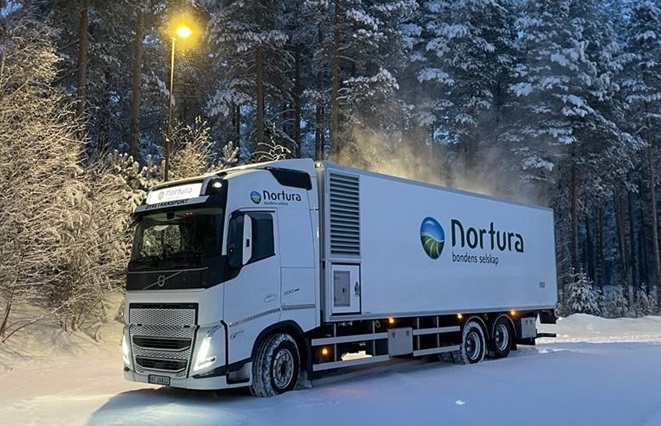
One of the main challenges in chick transport is maintaining the ideal climate. As the cold winter months started, it’s time to prepare for cold weather conditions. In some climates the temperatures can go as low as -35 degrees celsius. To prepare you for these circumstances, we have made a checklist of five vital elements of chick handling and transport during winter.
1. Planning Chick Transport in Winter
When transporting chicks during winter or cold weather conditions, a well-thought-out planning is essential. The driver of the chick carrier should be prepared for extreme colds or snow during the journey. It’s important to keep track of the traffic conditions frequently, since roadworks and traffic jams will cause longer delays in bad weather conditions. Create a plan of action that describes what procedures should be taken in the case of unexpected delays.
2. Preparing your Chick Carrier in Winter
The heating system of a Heering chick trailer doesn’t require additional maintenance during winter. We do advise you to start early with preheating the trailer. Especially when the chick carrier has not been used for a while, the unit can be thoroughly cold. It will take some time before the various components of the bodywork, the loading space and the panels are evenly heated to the required temperature. Try to keep the air valves closed as much as possible to prevent cold air from coming in.
3. Before Loading Chicks
During loading time, chicks can be exposed to rapid drops in temperature. There are some measurements that can be taken beforehand to ensure the safety of chicks during loading time. Consider the direction of the wind before placing the chick transport truck, to prevent chicks from being exposed directly to cold winds. Plan ahead so that the moment of loading will not take place during the coldest time of day/night. Also be aware that the roof above load-out doors must be made clear of snow/ice to protect workers and poultry from the possibility of falling snow or ice.
4. Loading/Unloading Chicks with Minimal Temperature Loss
Try to keep the doors closed as long as possible so the climate inside the trailer remains unaffected. By using an isolated curtain or barrier between the trailer and the loading/unloading area, chicks can be further protected for the cold outdoor climate. Chicks should be loaded into and out of the chick carrier as quickly as possible. It is also good to reduce the amount of trolleys that are (un)loaded simultaneously.
5. Check the Behaviour of Chicks
The optimal ambient temperature for chicks is between 32 and 34 degrees Celsius while the ideal body temperature of a chick is between 39,5 and 40 degrees Celsius. When newborn chicks become too cold they tend to clench up and form groups to keep eachother warm. Recognizing these symptoms, and knowing how to measure body temperature is crucial to make sure your chicks are kept in good climate conditions. This to make sure they arrive in good health, quality and temperature.
Service
A well-maintained truck and thorough training of the drivers is necessary for good chick deliveries. At Heering, we are ready to support you by phone or mail. Do not hesitate to contact us to learn more.